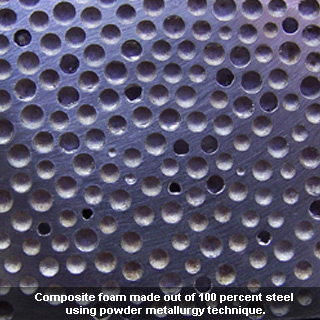
Researchers have accounted new discoveries that, apart from the astonishing high-energy absorption facility and light weight of their fresh composite foams, the ‘modulus of elasticity’ of the foam is believed to be quite similar to that of bone. Modulus of elasticity apparently gauges a material’s capability to distort when pressure is used and then goes back to its original shape when pressure is detached. The uneven surface of the foam may also promote bone development into the implant, thereby enhancing the power of implant. Composite foam is supposedly crafted out of 100 percent steel via powder metallurgy method.
Modulus of elasticity, which is said to be calculated in gigapascals (GPa), is very vital for biomedical implants. This was clarified by Dr. Afsaneh Rabiei, an associate professor of mechanical and aerospace engineering and an associate faculty member of biomedical engineering at NC State and co-author of the paper.
Rabiei commented, “When an orthopedic or dental implant is placed in the body to replace a bone or a part of a bone, it needs to handle the loads in the same way as its surrounding bone. If the modulus of elasticity of the implant is too much bigger than the bone, the implant will take over the load bearing and the surrounding bone will start to die. This will cause the loosening of the implant and eventually ends in failure. This is known as ‘stress shielding’. When this happens, the patient will need a revision surgery to replace the implant. Our composite foam can be a perfect match as an implant to prevent stress shielding.”
To present a suggestion of the dissimilarity between the modulus of elasticity of bone and that of conventional implants, bone appears to encompass modulus of between 10 and 30 GPa while titanium seems to have modulus of roughly 100 GPa. The novel composite foam supposedly has a modulus that could be steady with bone, and is also thought to be comparatively light since it is absorbent.
Rabiei mentioned that the uneven surface of the metal foam will bond well with the new bone formed around it and let the body build inside its surface porosities. This will increase the mechanical stability and strength of the implant inside the body.
The findings would be published in the March issue of Materials Science and Engineering A.
